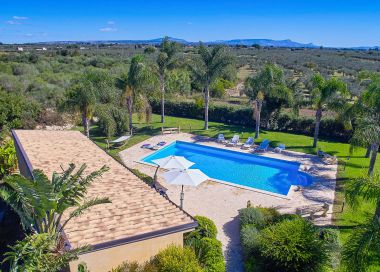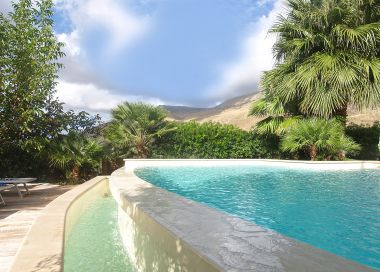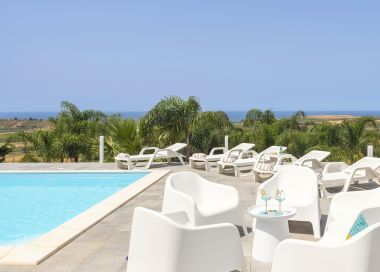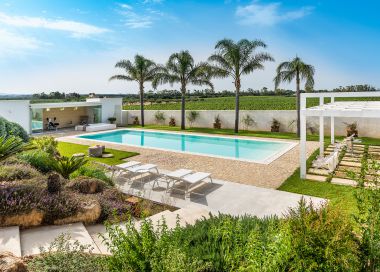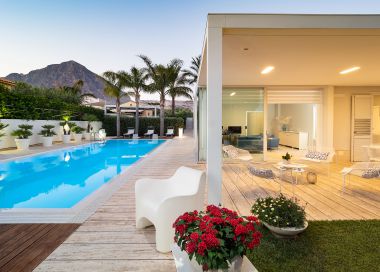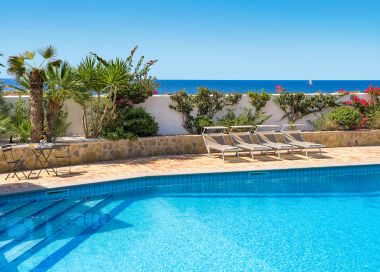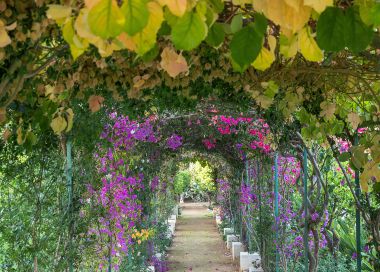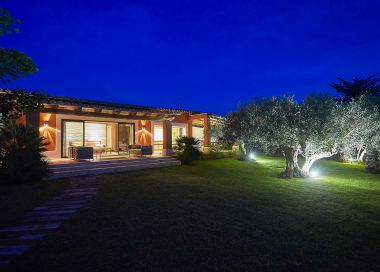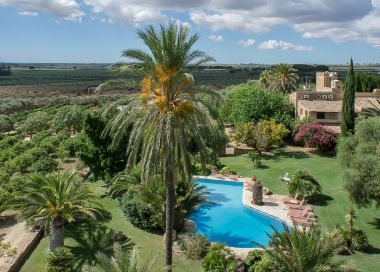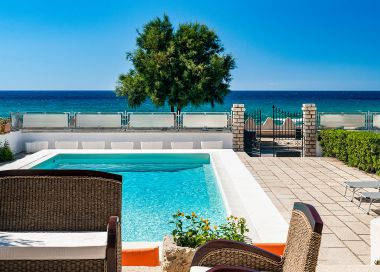The Phoenician island of San Pantaleo (Mozia)
Mozia, the Phoenician city on the island of San Pantaleo
San Pantaleo island (Mozia) is an island of around 45 hectares, the biggest of a small archipelago in front of the Stagnone Natural Reserve in Trapani and Marsala, of which it is part. Mozia (Mothya) became a trading outpost for Phoenician merchants and sailors in the XII century BC, a landing place and a commercial base similar to the Phoenician town of Tiro. In 397 BC it was destroyed by Dionysius of Syracuse. The following year, it was conquered by the Carthaginians but lost considerable importance and, apart from sporadic inhabitations evidenced in the remains of a few villas of the Hellenistic and Roman periods, it was completely abandoned during the Roman dominion. In the XVII and XVIII century Mozia was the site of some archaeological excavations that supported its identification in 1883. At the beginning of the Twentieth Century, the entire island was bought by Joseph Whitaker, an archaeologist and heir of a British family that had permanently moved to Sicily and made their fortune through Marsala wine trading. His studies and archaeological digs brought to light the Phoenician-Punic Sanctuary of the Capidazzu, part of the archaic necropolis, the House of the Mosaics and the fortifications of the North and South Gates. He also ordered to build a museum.
The Sanctuary of the Cappiddazzu (from the Sicilian for "large hat"), was an area originally used for animal sacrifices and rebuilt later with the additional construction of a sacred building.
The archaic Necropolis is found on the northern coast of the island. This is a vast rocky area with small-size pits that once contained a cinerary (an urn where the remains of the deceased were kept).
The Tophet of Mozia, about 60 metres long, was a Sanctuary where cinerary urns were kept since the VII century BC. The Sanctuary was later used as well for the conservation of votive terracotta items.
The inhabited area was located in the central part of the island, it was a real city, with an orthogonal road network, of which some sections have been brought to light. The most important find is the House of the Mosaics, which was a building complex built on two levels with a large rectangular peristyle courtyard, whose floor was decorated with some black, white and grey pebble mosaics of which a short section is visible today.
The Casermetta ("barracks") was a building set against the external side of a big wall tower, of which the southern side remains, in between the House of the Mosaics and the South Gate. The building is divided into two parts located at the sides of an open corridor; at the end of the corridor is a staircase that leads to the upper floor on the defensive walls where the remains of an open-air hall are visible, made by lime mortar with crushed pottery, with a narrow rainwater gully.
The Kothon was an inner harbour basin next to the South Gate, which was probably exploited for the loading and unloading of goods. It was connected to the sea by a canal that shrank in size towards the south. A part of the Kothon was utilised as well for ship repair services.
The Whitaker Museum is divided into two sections: the ancient section collected by Whitaker himself; and the modern section, set and organised on more scientific criteria.
The most ancient unit of the museum holds the most interesting archaeological material from the Whitaker donation, coming from the necropolis of Capo Lilibeo, Mozia and Birgi. Inscriptions, fragments, terracotta items, vases and ceramics, a sculpture-set representing two lions that bite into a bull and the "Young Man of Mozia," a statue of Apollo Patro in white marble which dates back to the second half of the V century BC.
The island is only accessible through two private piers that as well as connecting Mozia to the mainland, allow the visit of the other Stagnone islands. The island belongs to the Whitaker Foundation and unauthorised landing is prohibited, even if it is open to the public and can be visited during the opening hours.
The Sanctuary of the Cappiddazzu (from the Sicilian for "large hat"), was an area originally used for animal sacrifices and rebuilt later with the additional construction of a sacred building.
The archaic Necropolis is found on the northern coast of the island. This is a vast rocky area with small-size pits that once contained a cinerary (an urn where the remains of the deceased were kept).
The Tophet of Mozia, about 60 metres long, was a Sanctuary where cinerary urns were kept since the VII century BC. The Sanctuary was later used as well for the conservation of votive terracotta items.
The inhabited area was located in the central part of the island, it was a real city, with an orthogonal road network, of which some sections have been brought to light. The most important find is the House of the Mosaics, which was a building complex built on two levels with a large rectangular peristyle courtyard, whose floor was decorated with some black, white and grey pebble mosaics of which a short section is visible today.
The Casermetta ("barracks") was a building set against the external side of a big wall tower, of which the southern side remains, in between the House of the Mosaics and the South Gate. The building is divided into two parts located at the sides of an open corridor; at the end of the corridor is a staircase that leads to the upper floor on the defensive walls where the remains of an open-air hall are visible, made by lime mortar with crushed pottery, with a narrow rainwater gully.
The Kothon was an inner harbour basin next to the South Gate, which was probably exploited for the loading and unloading of goods. It was connected to the sea by a canal that shrank in size towards the south. A part of the Kothon was utilised as well for ship repair services.
The Whitaker Museum is divided into two sections: the ancient section collected by Whitaker himself; and the modern section, set and organised on more scientific criteria.
The most ancient unit of the museum holds the most interesting archaeological material from the Whitaker donation, coming from the necropolis of Capo Lilibeo, Mozia and Birgi. Inscriptions, fragments, terracotta items, vases and ceramics, a sculpture-set representing two lions that bite into a bull and the "Young Man of Mozia," a statue of Apollo Patro in white marble which dates back to the second half of the V century BC.
The island is only accessible through two private piers that as well as connecting Mozia to the mainland, allow the visit of the other Stagnone islands. The island belongs to the Whitaker Foundation and unauthorised landing is prohibited, even if it is open to the public and can be visited during the opening hours.






